Highlights from Collin Burry’s webinar on what tech can teach us about the workplace.
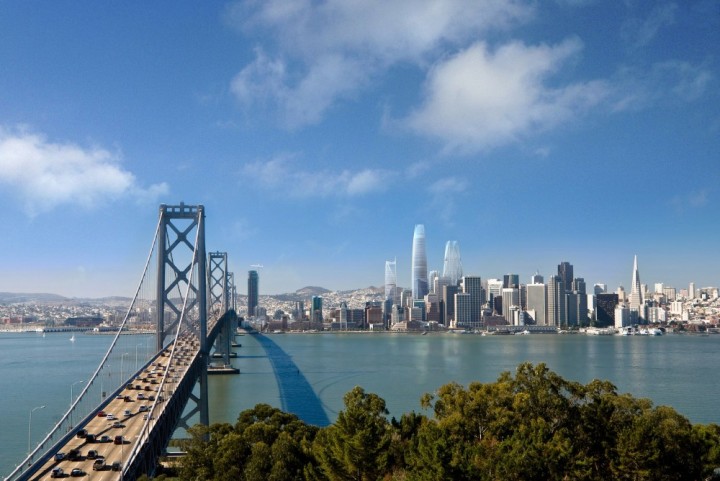
Collin Burry, a principal and design director at Gensler, hosted our November webinar, “Is the Design Boom in San Francisco a Vast Right Wing Conspiracy?”
“If you consider ‘right’ to be capitalism on steroids, unregulated commerce, entrepreneurial, wealth creation, and a pro-business environment, we’re seeing that in a frenzy we’ve never seen before in the Bay Area,” said Burry. “The irony is that it’s happening [in San Francisco]—home to tree huggers, farm-to-table food, the rise of the electric car. But somehow, all of the cultural ingredients, plus the business ingredients, were here to create this foundation for the current boom in tech.”
His recent work with Facebook, Airbnb, and Nokia, has given him an especially keen perspective on that boom, and during the presentation he shared what we can all learn from it. Scroll for more highlights.

It’s a revolution
“For the longest time we had the hardest time getting attention in San Francisco,” said Burry. All design eyes were on New York and LA. For an indication of how much things have shifted, Burry gave the example of John Maeda, the former president of RISD, “who has been hired by Kleiner Perkins—the tony venture capital firm in Silicon Valley—to infuse design thinking into the organization and to make a tie between creative people and venture capital money.”
Revolution, by the numbers:
-
The tech industry has created 25 percent of all new office jobs between 2009 and May 2014
-
The tech sector is creating three new jobs for every one new job in all other sectors combined
-
Every tech job generates work for 3.35 people working in other industries
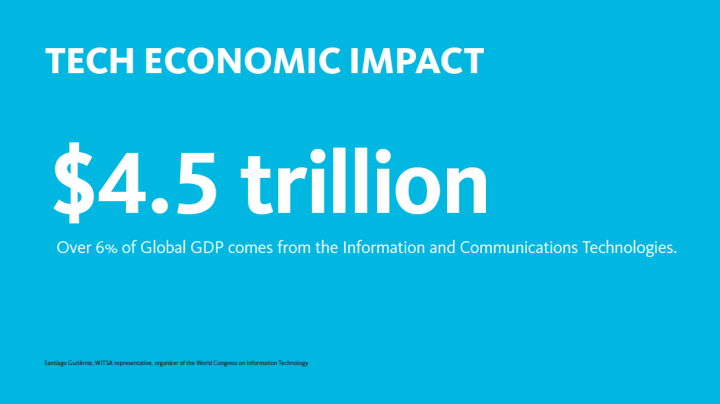
History of the Valley
To explain what set the stage for the current boom, Burry turned to the history of Silicon Valley. Companies like Shockley Labs and Fairchild Conductor laid the foundation, and in 1989, when World Wide Web rolled around, Burry said that they were still designing hundreds of thousands of square feet of cube farms, but the companies started to bring a lot more color, casualness, and playfulness in to the office. “That was kind of the death of the traditional workplace,” said Burry.
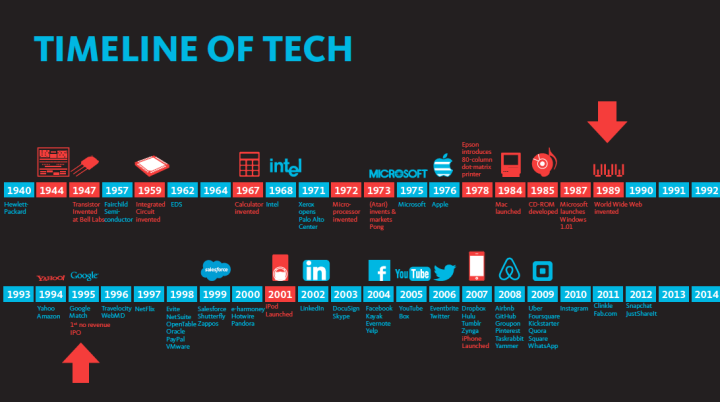
Where are we today?
Post-recession, “these bright, young millennial minds, in part just out of necessity, or fear [fueled] this huge surge of entrepreneurs, and the invention of so many amazing companies,” said Burry.
“Tech, in many ways, feels like it was the driver to push things forward [out of the recession],” he added.
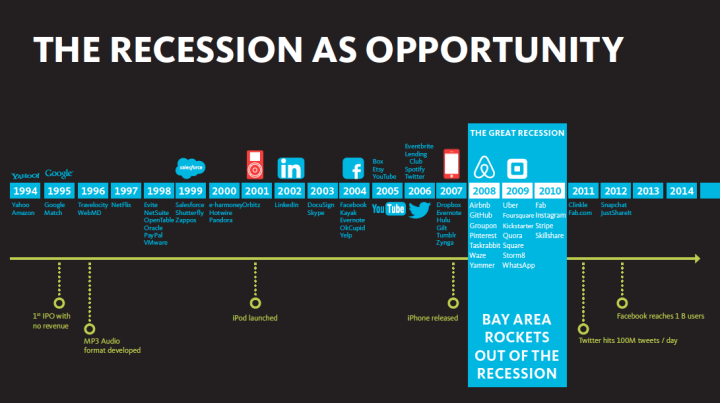
The impact on workplace
Here, Burry shared three case studies of recent projects for clients that are different points of their maturation:
-
Startup: Facebook
Burry called Facebook the “granddaddy” of all of the startups, presently gobbling up over one million square feet in suburbia. Previously, they were in downtown Palo Alto; recently, they bought a campus that the design community nicknamed “Sun Quentin” (after San Quentin, the prison). At first, it seemed like the antithesis of what Facebook would want in a corporate HQ.
Gensler resolved this by infusing the new campus with some of the vibrancy that Facebook had previously experienced in downtown Palo Alto, creating an “urban avenue” in the courtyard of the campus that includes everything from a bike repair shop to dry-cleaning to a health clinic.
“Taking care of their people is really critical,” said Burry. “The competition for talent is so fierce.”

-
Emerging: Airbnb
The brand and the mission of Airbnb was paramount to what they wanted to do in their San Francisco HQ. One of the biggest moves they made was to brand their atrium by abstracting one of their most popular listings in Australia.
“They also really embraced the idea of the connected office,” said Burry. “Everyone is unassigned, and authenticity is a big deal. We celebrated the space’s bones—it’s former life as a warehouse. It’s a very authentic expression.”
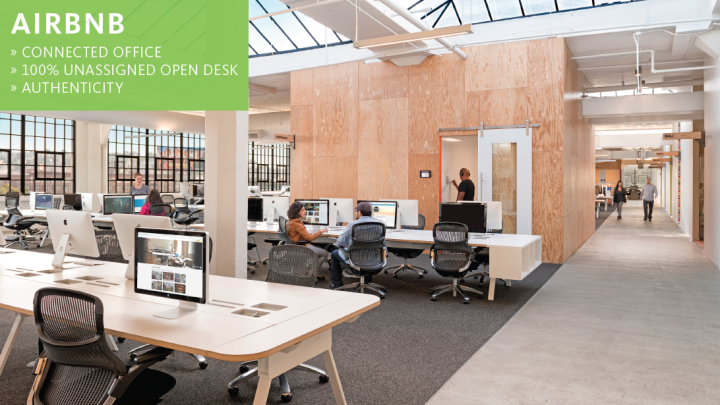
-
Mature: Nokia
The more mature players, like Nokia, now have an interesting challenge in the face of the growth of companies like Facebook and Airbnb.
“Nokia was founded in Finland, they’re a very old company,” said Burry. “In order for them to stay relevant, they had to do something that was going to attract younger workers” but still respect the employees who had been there for years.
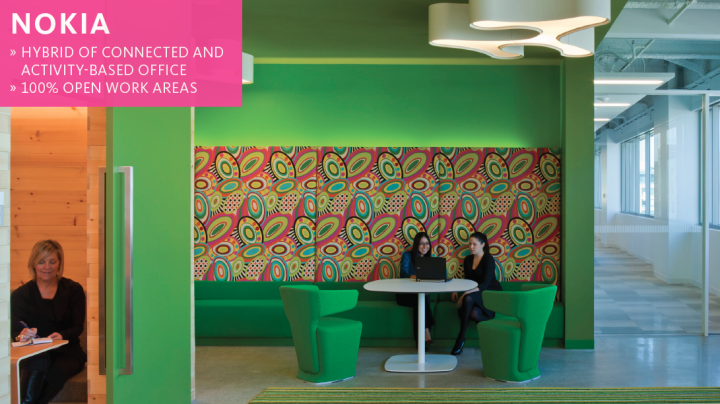
Gensler acknowledged this by creating a workplace that embraces many different workstyles: 100 percent open plan, a hybrid of a connected workplace and an activity-based model.
“We provided a variety of areas,” said Burry. “The mature worker doesn’t quite care as much about the perks and amenities that might be offered at some of these companies. For them, they come to work to work, and they want a work/life balance. So for them, the kind of workspaces that we design is quite different from what we might decide for Facebook. So we needed to address that and provide an array of spaces.”


